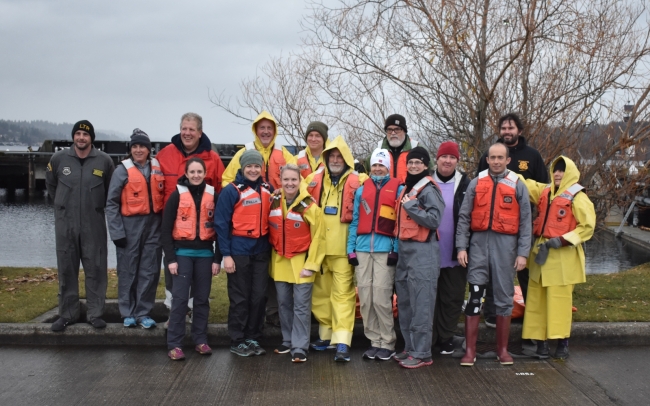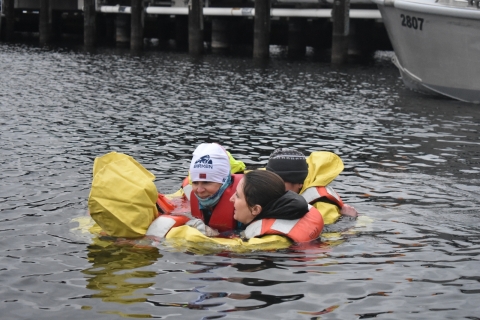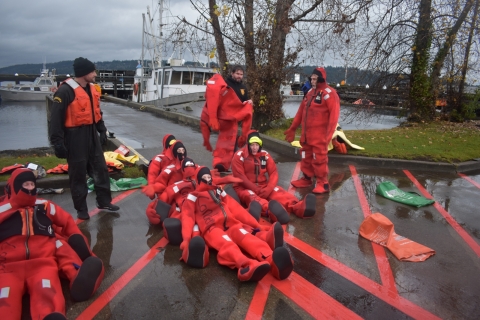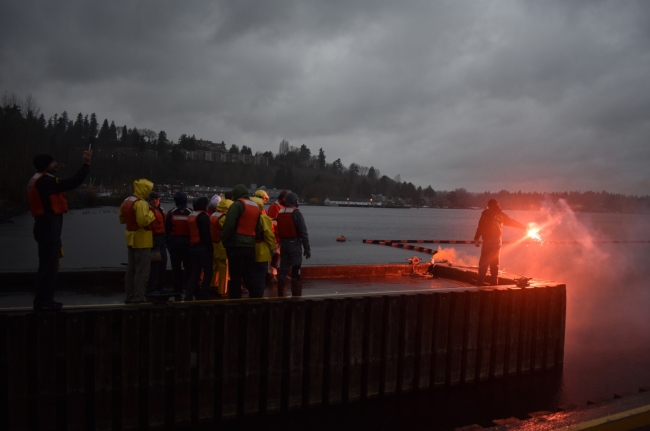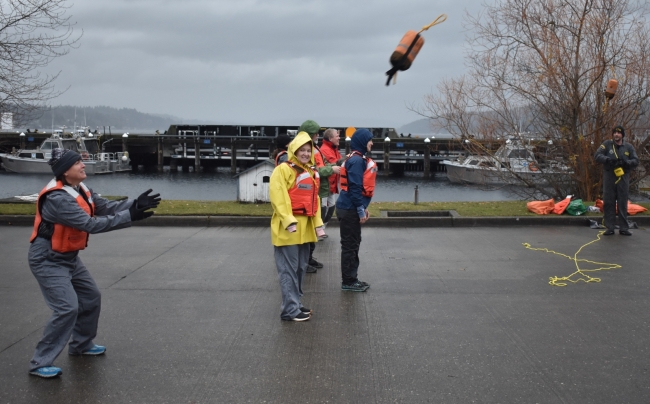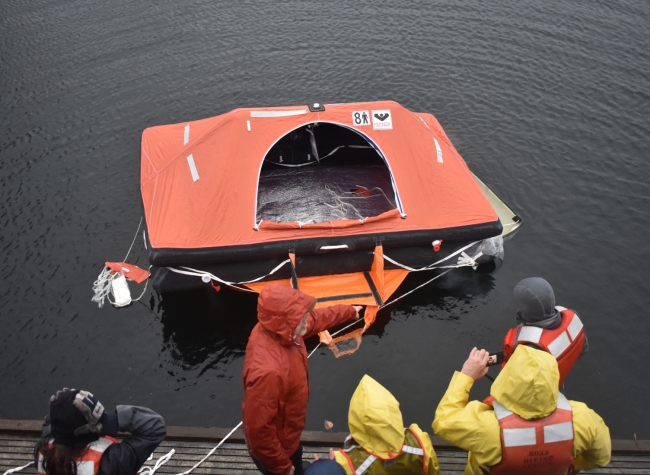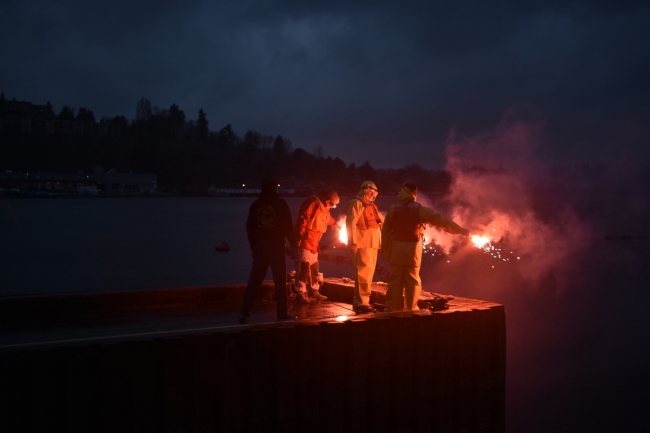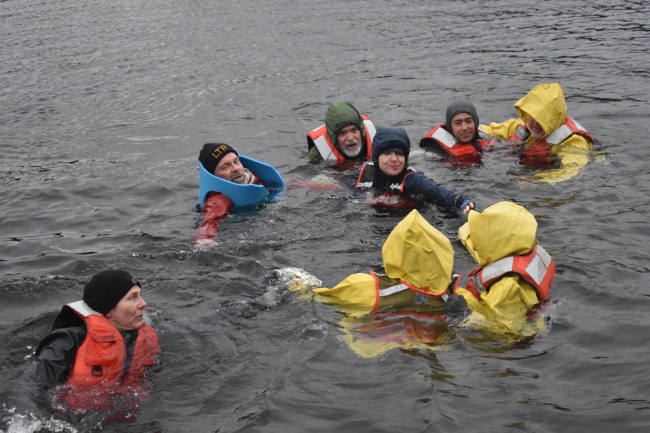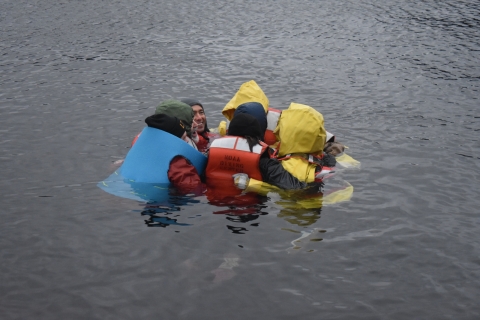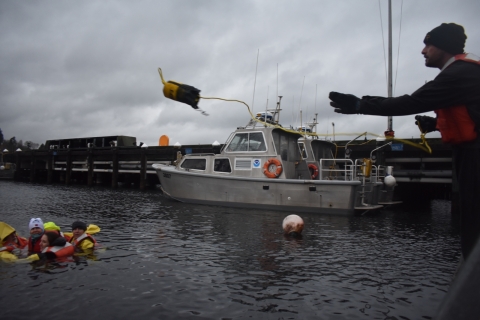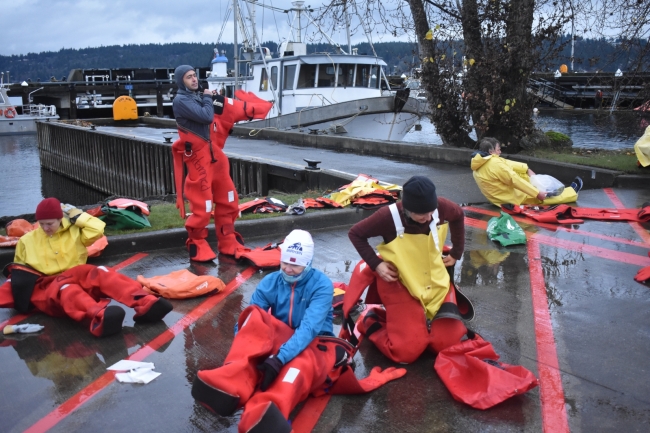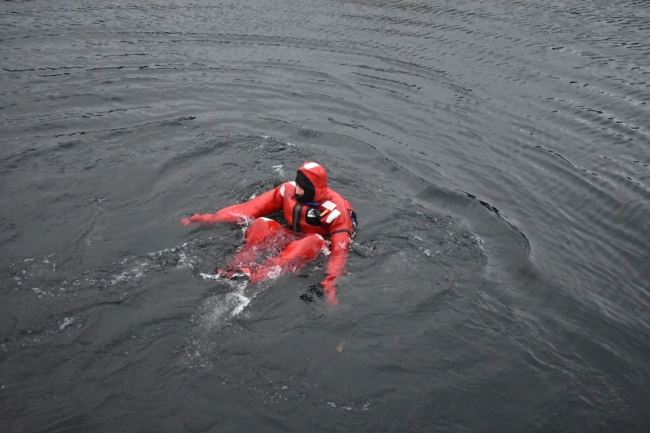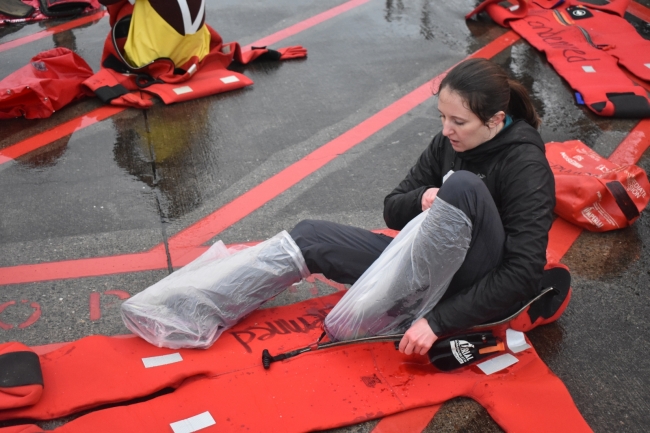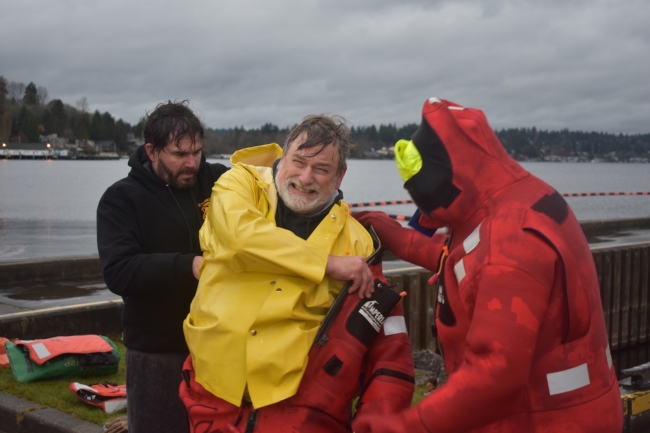On any given day, NOAA’s Office of Response and Restoration (OR&R) works to maintain a presence in the U.S. Arctic Region. This footprint, specifically oil spill response and environmental restoration, is only expected to grow given increases in regional development—commercial shipping traffic and energy exploration and production.
Unique safety challenges have been identified for personnel associated with response, assessment, and restoration efforts due to the remote infrastructure, complex logistics, and cold climate in the region. Demonstrating NOAA’s commitment toward enhanced Arctic safety preparedness, specific OR&R members were selected to participate in a four-day intensive Arctic Survival Training at NOAA’s Western Regional Campus in Seattle from Dec. 10 -13, 2019.
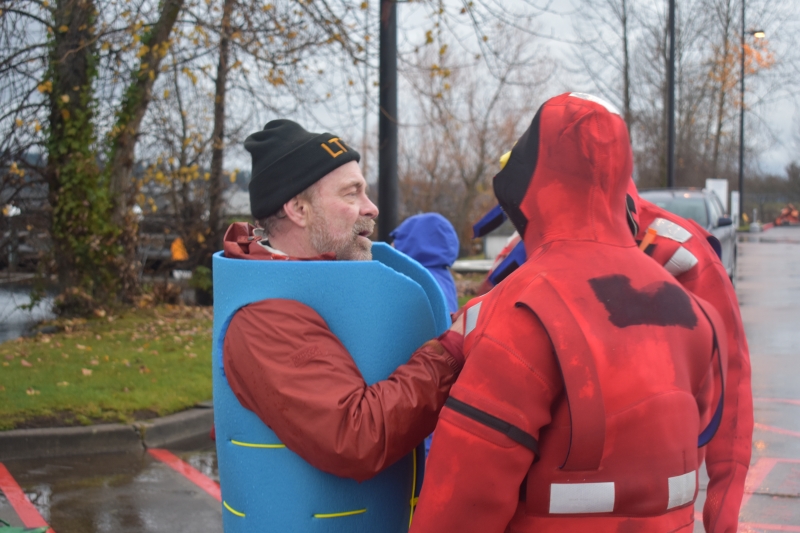
Learn to Return Training Systems Inc. (LTR), based out of Anchorage, was contracted to prepare personnel to manage the unexpected in remote Arctic locations where medical assistance or transport could be delayed. Training was largely hands-on and students learned essential medical concepts and basic life support skills. Proctored by an instructional staff whose impressive backgrounds include an array of safety, rescue, and wilderness education experience, the course was led by the director and founder of LTR, Brian Horner.
Horner, at 60 years old, has dedicated his life to instructional programs designed to save lives. His credibility, humility, and life experiences (to include personal losses) captivated students and illustrated the gravity and importance of the course content. Horner is a former Survival, Escape, Resistance, Evasion (SERE) instructor for the military, and a professional mountaineer with multiple expeditions as a medic and rope safety professional to Antarctica, Greenland, Peru, Russia, the Georgia Republic, China, and Puerto Rico. He and his team relayed true stories where they applied the techniques being taught in the course to real-life incidents. They were unequivocally frank about what worked and what didn’t work, which only lent to their credibility for participants.
The first two days of training consisted of delayed care, first aid, and wilderness survival medicine concepts meant to prepare personnel for managing patients for days — not hours. A truly dynamic learning experience, students were provided guidance on how to manage emergencies in the field. They were then given “micro-scenarios” to work through.
Adding to the realism, instructors would surprise students with a simulated incident when they least expected it to gauge reaction time and concept retention. An example of some of the “micro-scenarios” included a hypoglycemic patient, snowmobile impact, a cardiac event, climbing falls, fractures, and more. Participants were even given pig’s legs to practice wound sterilization, packing, and wound closures on.
The final two days focused on wildlife awareness, cold water, and land based survival training. A select few may have seen a grizzly bear in a navy blue sweatshirt prowling around the campus on Thursday, Dec 12, but needn’t have worried as students were simply learning predator defense skills. Students practiced multiple deterrent techniques, proper positioning in the event of large predator encounters, and bear spray usage. (No bears, real or simulated, were hurt during training and all bear spray used was inert material.)
The cold water immersion activity was one students were dreading from the moment they received the course agenda. To fully impart the physiological effects of exposure to cold water, LTR prepared students to fully immerse themselves in Lake Washington water, wearing just their street clothes and a personal flotation device (type III). Lake Washington hovered around 48-50 degrees during the month of December this year, though the lake water temperature has dropped as low as the mid-30s in previous years.
Participating in the immersion right alongside students was Brian Horner himself, which garnered camaraderie and appreciation from students. Participants were in the water for about four minutes before exiting and transitioning into immersion suits — made all the more difficult due to muscle contraction from the cold water immersion.
The immersion component really resonated with participants. It wasn’t pretty, nor was it pleasant, but the experience truly helped participants gain an appreciation for the importance of maintaining cold water survival gear and comprehension about the risk that prolonged exposure has for hypothermia. While wearing immersion suits, participants practiced vessel egress into the water from height, survival swimming techniques, rescue throw bag usage, and how to enter a life raft from the water.
For the final field survival day, students were provided with survival kits, expected to fashion improvised survival clothing, render first aid, build a shelter, and make a fire. For lunch, students were given ramen noodles — placed in a ziplock, duct taped to a lanyard, and heated using only body heat. The afternoon ended with the students using a variety of signaling devices, including radios, beacons, and signal lasers.
While participants received certifications in American Red Cross CPR and automated external defibrillator (AED) use, and wilderness first aid (WFA), the greatest value was by far the situational awareness, human element, and dose of reality provided by LTR instructors and the tailored course content. Upon completing this course, participants could be confident that it met the intended objective of enhanced Arctic safety preparedness.

